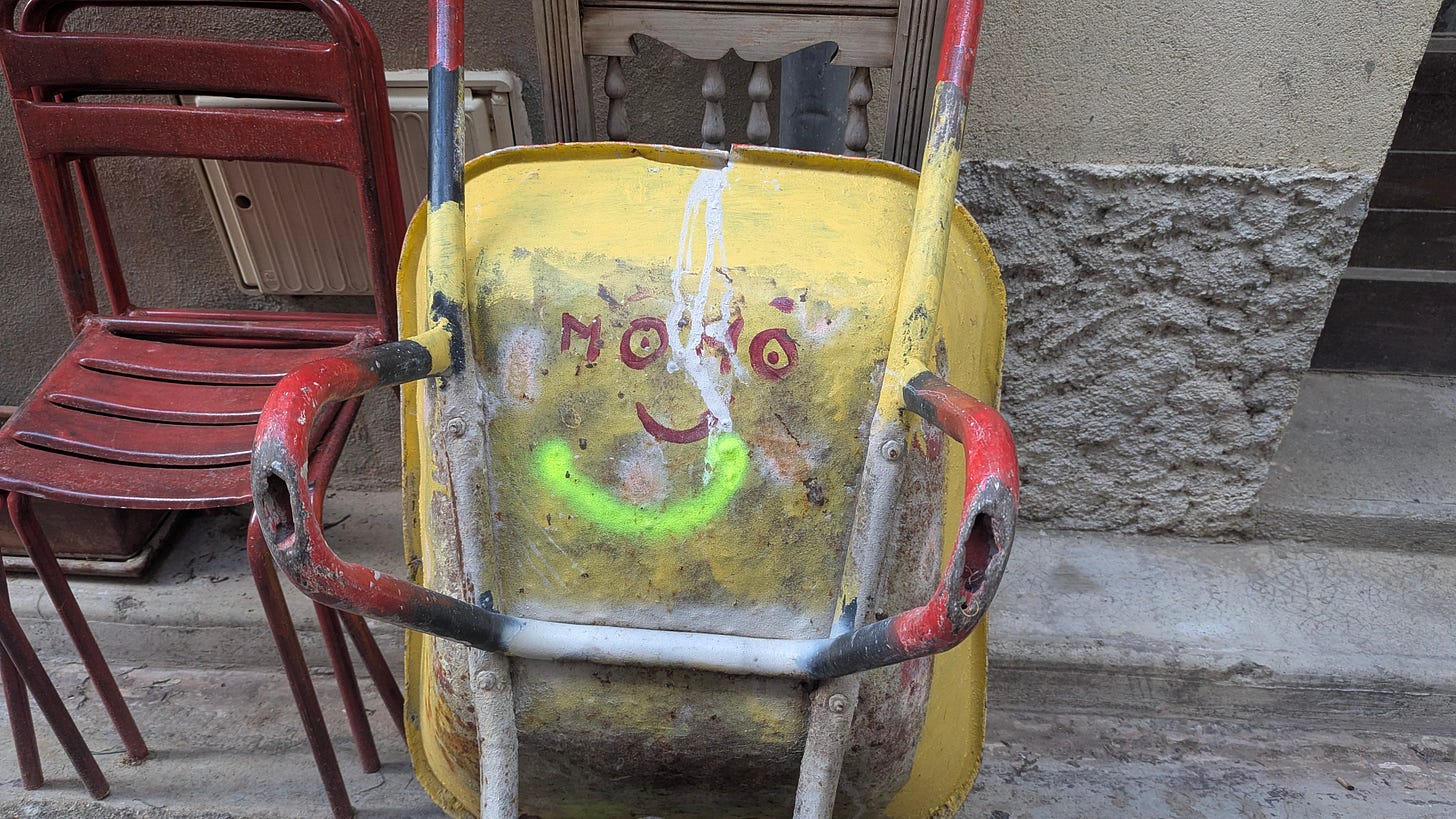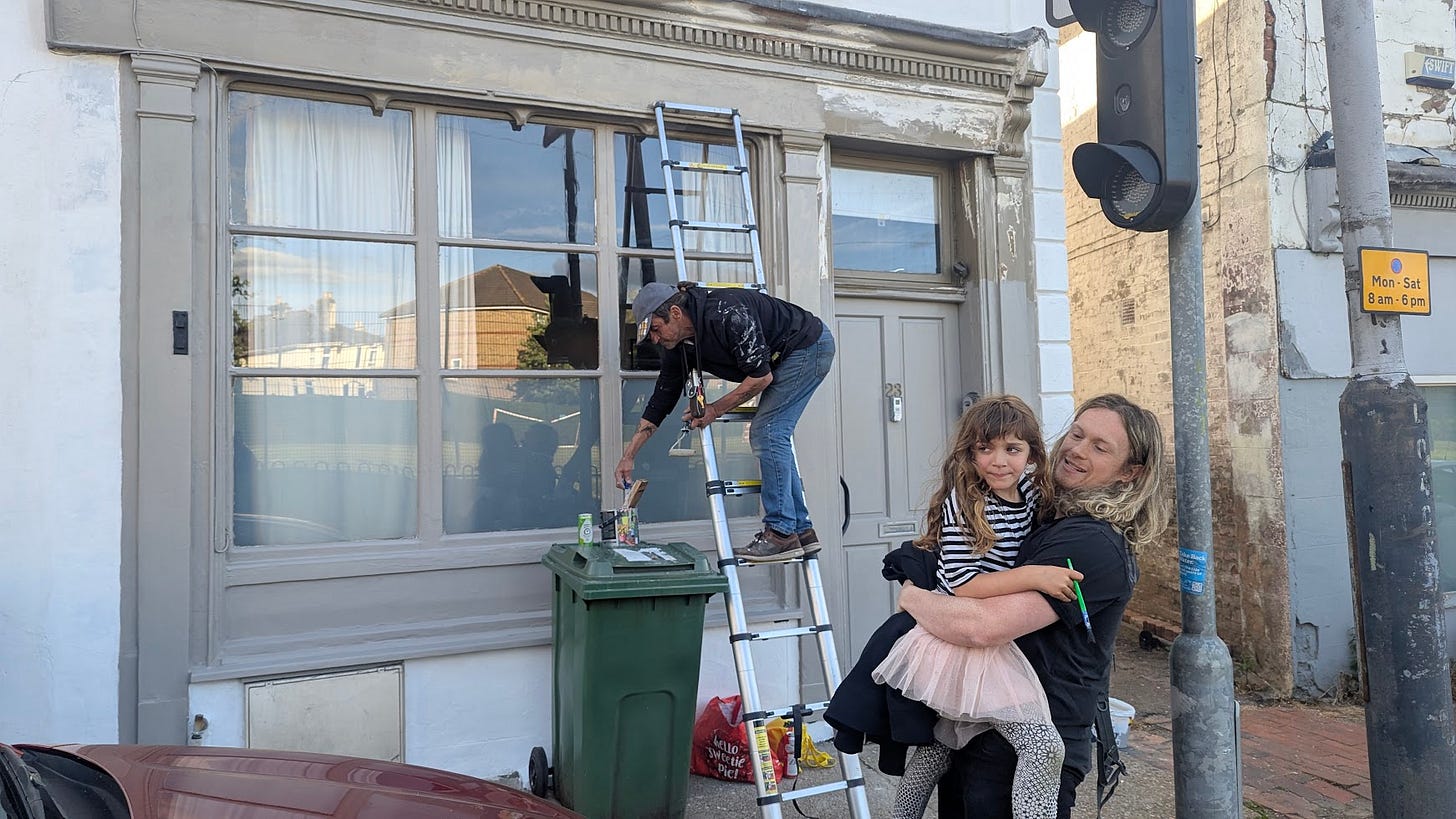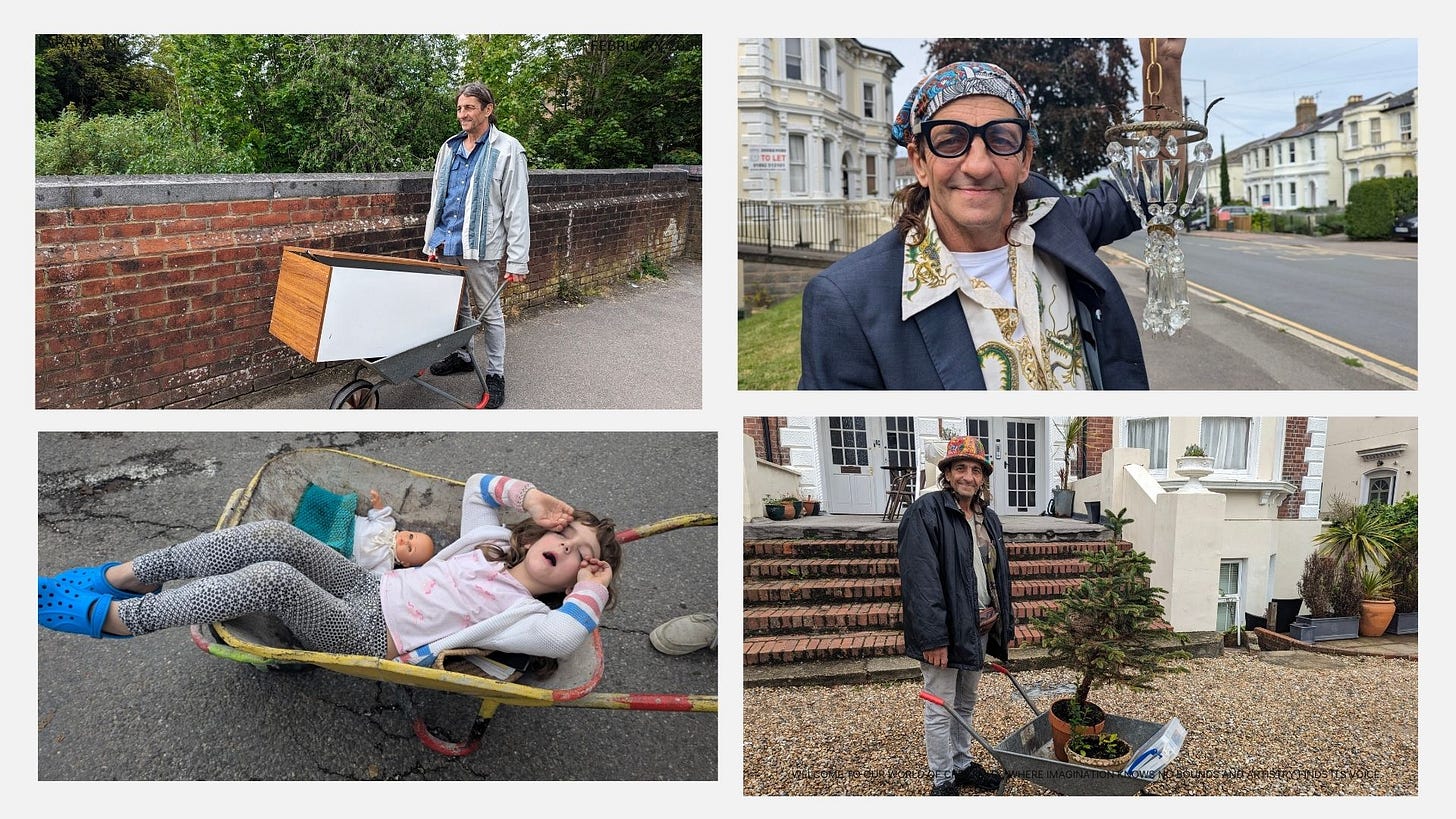I’m currently working with Tunbridge Wells Railway Station for Rail200
It’s to be a four-panel poster board celebrating two hundred years of the railways here in the UK. Exciting. I’m loving it.
I never gave much thought to the history of the railway, other than knowing how difficult it is in winter to keep the Hastings to Tunbridge Wells line open. Built in 1850, carving its way through the rugged landscape of the Kent and Sussex Weald was a feat in itself.
The journey winds through Frant, Wadhurst, Stonegate, Etchingham, and Robertsbridge, where my godfather, the cartoonist Leslie Illingworth, once lived, then on to the famous site of Battle - 1066. From there, it passes through Crowhurst, whose name comes from two Old English words: crāwe, meaning crow, and hyrst, meaning wooded hill. The final stretch takes you through St Leonards Warrior Square and into Hastings, and the sea beyond. Even today, delays are common, whether due to loosened tracks or wild animals straying onto the line. The train chugs and clatters through long stretches of wilderness, past deer and foxes, and not much else, until it plunges down towards the coast.
But now, as I search the internet,
archives, and read countless books, I find myself deeply immersed in the story of how the railways were painstakingly dug and laid aby the men who made it possible. The Navvies.
They were the ones who dug deep shafts and risked their lives to build the canals, ports, and railways of England, and sometimes migrating, taking their strength and skills abroad to work across Europe, South Africa, Canada, New Zealand, and Australia.
In the early days of our railway construction,
around 1830, thousands of men walked from site to site, living precariously, and working relentlessly in wild England, conquering and building up the fast-growing urban centres of the newly-born Industrial Revolution.
The Navvy was dangerously fearless and fearlessly independent. They were admired by some segments of society and appalled by others. To the drab-clothed Victorian classes, bound by strict social morals and double-standards these men were unruly, rough, and unsettling.
These men of legend, criss-crossing the country from north to south, east to west.
You’d see them, heave-ho, with pickaxe and barrow, the ultimate urban cowboys.
Lone wolves. Dancers of chance.
They never flinched.
With arms of steel, they were known as heavy drinkers and good-time lads. When they came to town, the girls flocked, they had cash in their pockets, no wives to answer to, and were wild, and FREE.
Many were Irish, many were not, but all were travellers,
free.
The Navvy were gypsy soul-travellers. The brave. The bold.
If they were loath to, they might find a bed in one of the lodging houses, squalid places where up to three shared a single bed. But more often than not, they were on the move, with no fixed abode.
The Navvy lived the harshness of life like a hero, by moving from site to site, roaming across England, often living in makeshift huts they built along the way, made from timber and turf beside the canals and railways they laboured on.

Yet, the other truth is, these men, many of whom were Irish immigrants who’d come to Britain due to the famine were rarely thanked and honoured by the British, just like the Chinese immigrants who faced horrors whilst building the Canadian Transcontinental Railroad. 80-90% of the railroad workforce was Chinese.
Many Navvies lost their lives building the railways.
The Australian, Ralph Rogan, writes in his poem…
We laid the steel ribbons from the jungle-clad north
To the snow-covered mountains down south;
We pitched our rough homes near the rock cuttings side
And we camped by the tunnels dark mouth.
We blasted our way through the frowning dark range
And oft-times we choked for our breath;
In the dark underground we breathed the foul air
Where life was a gamble with death.
(The Navvy Memorial in Otley, West Yorkshire, is the only monument in the UK dedicated to the navvies. It is a Grade II listed structure and commemorates the 23 men who died constructing the Bramhope Tunnel between 1845 and 1849, a major feat of Victorian engineering. Shaped like the tunnel’s north portal, the memorial stands in All Saints’ churchyard and serves as a rare national tribute to the thousands of navvies whose dangerous work laid the foundations of Britain’s rail network.( From Wikipedia.)
But few of us know this as we step on board the London bound train…
Onto Momo who this story is also about
When I spied Momo on a roof top many years ago now, I was enchanted by his erratic and errant life-style, and soon a great friendship which has spanned over thirty years begun. And now, I realise my friend is also a Navvy.
He comes from the heart of France, Châtellerault, Joan of Arc territory, and speaks of growing up on a broken, impoverished estate. One of twelve children, he is born to a Spanish gypsy mother, whose grandfather was shot by Franco’s men at the Catalonian border, and a Polish labourer father. They lived in makeshift sheds, built by his father and fellow workers, alongside Algerian families.
Momo skipped school to learn the art of the streets
discovering early that everything you find has meaning. His father, a mason and collector of anything, a French rag-and-bone-man, kept a warehouse of things in the middle of the melon fields in lieu of free work - a life-time promise from the melon farmer. From his father, Momo learned about collecting and agility. His father, Jean-Gilbert Guitton, was a “pole” dancer, climbing drainpipes and sliding down buildings with nothing but a rope to hold him. An expert collector, he could tell the price of metal by biting it, spot the colour of copper painted a mile off, and judge a good pony and trap at a glance.
I once visited their home in Verrue, a village of 300. By then, the shed was a roughly built stone house. In the front yard there was a bath full of clothes soaking, Denise, Momo’s mother, would ride her bike to the recycling plant, pull bags over the fence, and bring them back by the load. She then washes and irons them with an old hob-top iron.
Jean and Denise would go off to the weekly Châtellerault market in Les Halles and sell their clothes and wares in a stall outside. This is how they made their money.
That night, I slept in a sloped, wooden, four-poster bed crammed with Spanish dolls. It felt like curling up inside a gypsy caravan with brightly coloured lace and crochet draped everywhere and the room thick with tucked-away treasures: firelighters, hand warmers, domino sets, playing cards, biscuits. You name them, they were there.
One day, Jean told his sixteen year old rebellious son
“Learn to build, get a trade, then get yourself a barrow.”
So Momo did. His given name is Christian, but changed it to Maurice/ Momo and set off to work every site in Châtellerault town until he got his papers.
At eighteen he headed south with a barrow, working his way down through France, right and left, up and down working in historical monuments, making dry-stone walls. He created facades, dug trenches, opened up guttering, ripped up old vines, planted new ones. His tools: barrow, spade and a bucket.
Along the way, he met his wife, a woman from a very different world. They had two children. It did not last. He began a new life near Spain, near his roots, with the wild Corbières countryside stretching out around him; free to roam.
The first thing he did when he arrived in Tuchan village was buy a ruin, a place for his children, one day, when they came to visit. Today it is filled with his treasures from top to bottom.
Of all the things emptied into the bottom of the house, it’s his wheelbarrow I love the most. His trade mark.
"He’s every Tuchanais’ go-to when the impossible needs doing. You’ll find him wandering the village, lifting anything in sight, even entire households. “I’ve got a barrow, I can work.”
He comes to visit us in the UK, sometimes, walking up and down Camden Road in Tunbridge Wells with his three words of English: “My name Momo.” He finds work. He’s just finished two facades, and has two more waiting for him next time round.
Last year he found my mother’s old barrow in her garden, he refurbished it, and it works a treat!
So, while I have been writing I have been creating and here is my rough-idea for poster 1 for SE railway.

Thank you so much for reading, enjoying and for sharing. It makes me very happy to hear your comments and know that it is being read.
Please write me a comment or share if you like this. Have a great start to the new month.










If you come to the Creuse you can visit this amazing village of the sculptors: https://www.tourisme-creuse.com/toute-la-creuse/decouvrir/sites-a-visiter/villes-et-villages-de-caractere/village-de-masgot/
What a fascinating history of a group I knew nothing about and what a character, that Momo!